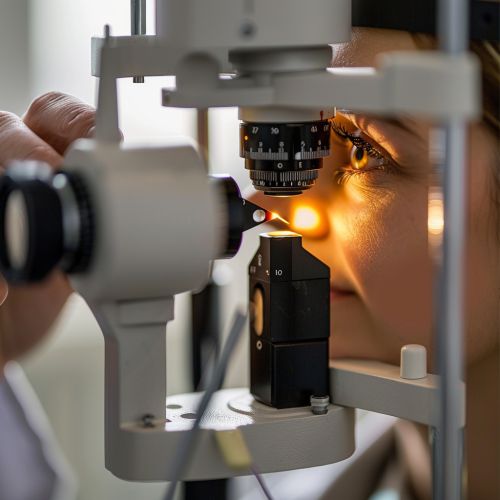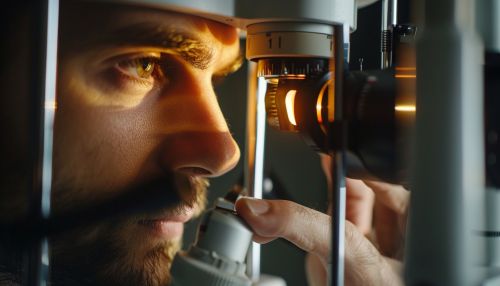Eye disease
Introduction
Eye diseases encompass a wide range of conditions that affect the eyes and vision. These diseases can range from mild and easily treatable to severe and potentially vision-threatening. Understanding the various types of eye diseases, their causes, symptoms, and treatment options is crucial for maintaining ocular health and preventing vision loss.
Types of Eye Diseases
Cataracts
Cataracts are a common eye condition characterized by the clouding of the lens, leading to a decrease in vision. They are typically associated with aging but can also result from trauma, radiation exposure, or certain medications. Symptoms of cataracts include blurred vision, difficulty with glare, and faded colors. Treatment usually involves surgical removal of the cloudy lens and replacement with an artificial intraocular lens.
Glaucoma
Glaucoma is a group of eye diseases that damage the optic nerve, often due to increased intraocular pressure. It is one of the leading causes of blindness worldwide. There are several types of glaucoma, including open-angle glaucoma, angle-closure glaucoma, and normal-tension glaucoma. Symptoms may include loss of peripheral vision, eye pain, and halos around lights. Treatment options include medications, laser therapy, and surgery to lower intraocular pressure.
Age-Related Macular Degeneration (AMD)
Age-related macular degeneration is a degenerative condition affecting the macula, the central part of the retina responsible for sharp vision. AMD is a leading cause of vision loss in older adults. There are two forms of AMD: dry (atrophic) and wet (neovascular). Symptoms include blurred central vision, difficulty reading, and distorted vision. While there is no cure for AMD, treatments such as anti-VEGF injections and photodynamic therapy can slow its progression.
Diabetic Retinopathy
Diabetic retinopathy is a complication of diabetes that affects the blood vessels of the retina. It is a leading cause of blindness in working-age adults. The condition progresses through stages, from mild non-proliferative retinopathy to proliferative retinopathy, where new, abnormal blood vessels form. Symptoms include floaters, blurred vision, and vision loss. Management includes strict control of blood sugar levels, laser treatment, and vitrectomy surgery.
Retinal Detachment
Retinal detachment occurs when the retina separates from the underlying tissue, leading to vision loss if not promptly treated. Causes include trauma, severe myopia, and inflammatory eye diseases. Symptoms include sudden flashes of light, floaters, and a shadow or curtain over part of the visual field. Treatment typically involves surgical procedures such as pneumatic retinopexy, scleral buckle, or vitrectomy.
Keratoconus
Keratoconus is a progressive eye disease where the cornea thins and bulges into a cone-like shape, distorting vision. It usually begins in adolescence and can progress into middle age. Symptoms include blurred vision, increased sensitivity to light, and frequent changes in eyeglass prescriptions. Treatment options range from corrective lenses to corneal cross-linking and, in severe cases, corneal transplant.


Conjunctivitis
Conjunctivitis, also known as pink eye, is an inflammation of the conjunctiva, the thin, transparent layer covering the white part of the eye and the inner surface of the eyelids. It can be caused by infections, allergies, or irritants. Symptoms include redness, itching, discharge, and tearing. Treatment depends on the cause and may involve antibiotics, antihistamines, or avoiding the irritant.
Uveitis
Uveitis is an inflammation of the uvea, the middle layer of the eye, which includes the iris, ciliary body, and choroid. It can result from infections, autoimmune diseases, or trauma. Symptoms include eye pain, redness, blurred vision, and light sensitivity. Treatment often involves corticosteroids and immunosuppressive agents to reduce inflammation.
Causes and Risk Factors
The causes and risk factors for eye diseases vary widely depending on the specific condition. Common risk factors include:
- **Age**: Many eye diseases, such as cataracts and AMD, are more prevalent in older adults.
- **Genetics**: A family history of certain eye diseases can increase the risk.
- **Diabetes**: Diabetic retinopathy is directly linked to diabetes.
- **Hypertension**: High blood pressure can contribute to conditions like hypertensive retinopathy.
- **Smoking**: Smoking is a significant risk factor for AMD and cataracts.
- **UV Exposure**: Prolonged exposure to ultraviolet light can increase the risk of cataracts and other eye conditions.
- **Trauma**: Physical injuries to the eye can lead to conditions like retinal detachment.
Symptoms
Symptoms of eye diseases can vary widely but often include:
- **Blurred Vision**: Common in many eye conditions, including cataracts and AMD.
- **Eye Pain**: Often associated with conditions like glaucoma and uveitis.
- **Redness**: Seen in conjunctivitis and uveitis.
- **Floaters and Flashes**: Indicative of retinal detachment or diabetic retinopathy.
- **Loss of Peripheral Vision**: A hallmark of glaucoma.
- **Sensitivity to Light**: Common in keratoconus and uveitis.
Diagnosis
Diagnosing eye diseases typically involves a comprehensive eye examination by an ophthalmologist or optometrist. Diagnostic tools and techniques include:
- **Visual Acuity Test**: Measures the clarity of vision.
- **Tonometry**: Measures intraocular pressure, important for diagnosing glaucoma.
- **Ophthalmoscopy**: Allows examination of the retina and optic nerve.
- **Slit-Lamp Examination**: Provides a magnified view of the eye structures.
- **Optical Coherence Tomography (OCT)**: Provides detailed images of the retina.
- **Fluorescein Angiography**: Visualizes blood flow in the retina.
Treatment
Treatment options for eye diseases depend on the specific condition and its severity. Common treatments include:
- **Medications**: Eye drops, oral medications, and injections are used to treat conditions like glaucoma, uveitis, and AMD.
- **Laser Therapy**: Used for diabetic retinopathy, glaucoma, and AMD.
- **Surgery**: Procedures such as cataract surgery, vitrectomy, and corneal transplant are performed for various conditions.
- **Corrective Lenses**: Glasses or contact lenses are used to correct refractive errors and manage conditions like keratoconus.
Prevention
Preventing eye diseases involves several strategies, including:
- **Regular Eye Exams**: Early detection and treatment of eye conditions.
- **Healthy Lifestyle**: Maintaining a balanced diet, exercising, and avoiding smoking.
- **Protective Eyewear**: Using sunglasses to protect against UV light and safety goggles to prevent eye injuries.
- **Blood Sugar Control**: Managing diabetes to prevent diabetic retinopathy.
- **Blood Pressure Management**: Controlling hypertension to reduce the risk of eye diseases.
Research and Advances
Ongoing research in the field of ophthalmology is leading to new treatments and technologies for eye diseases. Advances include:
- **Gene Therapy**: Promising treatments for inherited retinal diseases.
- **Stem Cell Therapy**: Potential for regenerating damaged retinal cells.
- **Artificial Intelligence**: Enhancing diagnostic accuracy and treatment planning.
- **New Medications**: Development of novel drugs for conditions like AMD and glaucoma.
